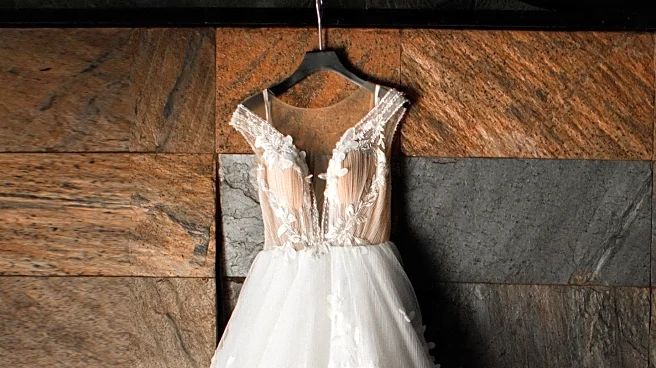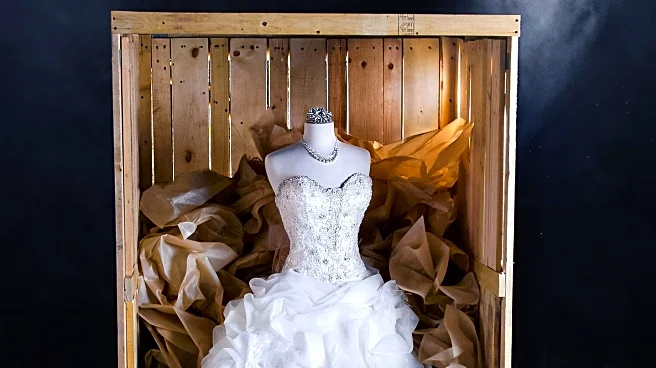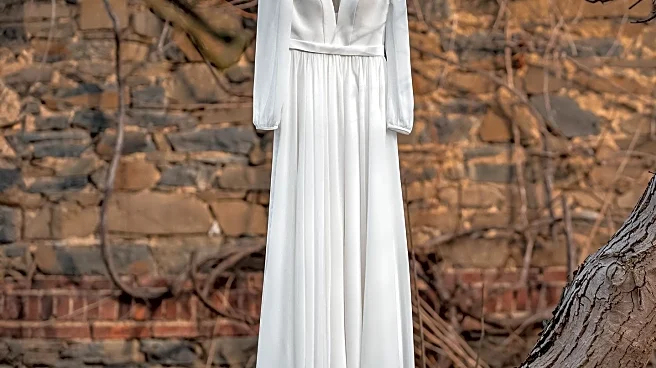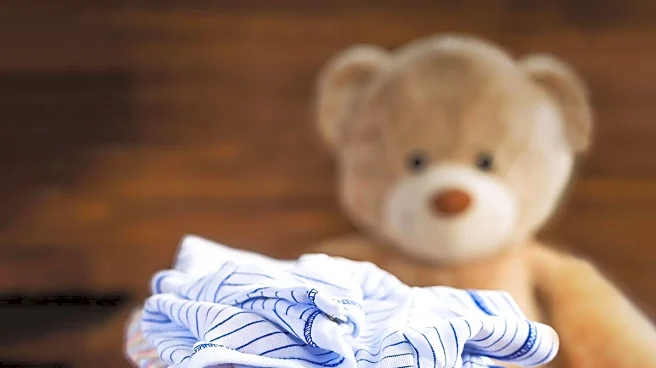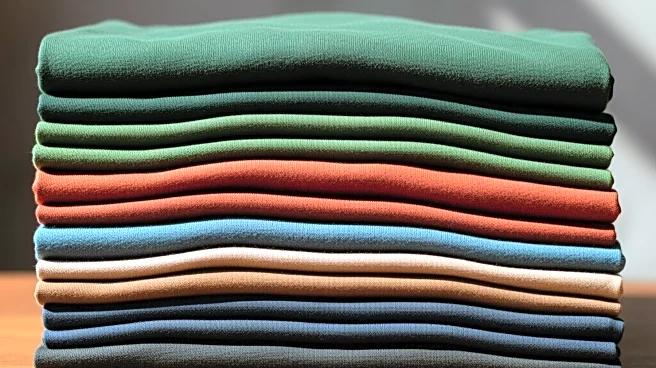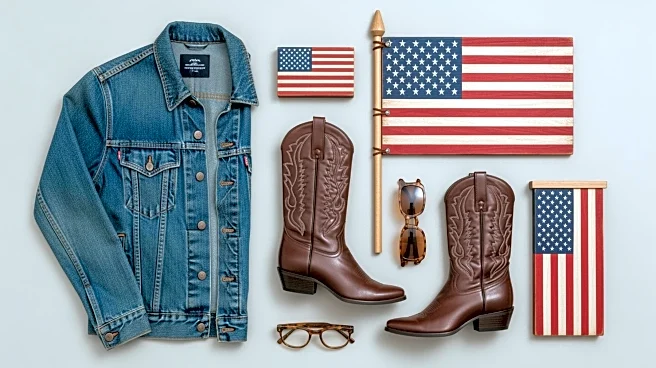What's Happening?
A bride-to-be, facing challenges in finding a wedding dress, discovered a satin gown at a Goodwill store for $40. The dress, featuring a corseted embroidered top and flowing sleeves, fits her perfectly
and requires only light cleaning. The bride shared her find on Reddit, where it received significant attention and support. Thrift shopping for wedding dresses is not only cost-effective but also a sustainable choice, offering unique styles and reducing environmental impact. The average cost of a wedding dress in the U.S. is around $2,000, making thrift shopping an attractive alternative.
Why It's Important?
This story highlights the growing trend of thrift shopping for wedding dresses, which offers financial savings and sustainability benefits. As the average cost of a wedding dress is substantial, finding affordable alternatives can ease financial burdens for couples. Thrift shopping also promotes environmental consciousness by reducing waste and encouraging the reuse of garments. The bride's experience underscores the potential for finding unique and fitting dresses outside traditional retail channels, appealing to those seeking individuality and budget-friendly options.
What's Next?
The bride plans to clean the dress and prepare it for her upcoming wedding. Her story may inspire other brides to explore thrift shopping as a viable option for finding wedding attire. As awareness of the benefits of thrift shopping grows, more individuals may consider second-hand options for special occasions, potentially influencing the bridal industry to accommodate this trend. Retailers and thrift stores may see increased demand for second-hand wedding dresses, prompting them to expand their offerings and marketing strategies.
Beyond the Headlines
The bride's discovery at Goodwill reflects broader cultural shifts towards sustainability and conscious consumerism. As more individuals prioritize environmental impact and cost savings, thrift shopping may become increasingly popular for various occasions. This trend could lead to changes in consumer behavior, encouraging the fashion industry to adopt more sustainable practices and cater to eco-conscious shoppers. The story also highlights the role of online communities in sharing and celebrating thrift shopping successes, fostering a sense of community and support among like-minded individuals.
